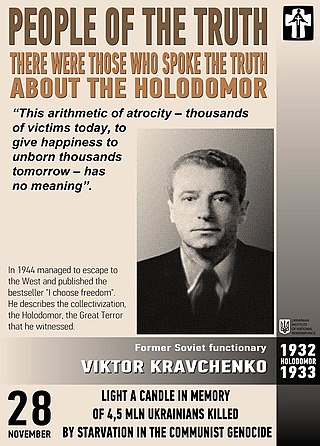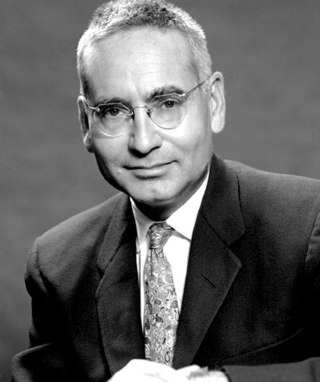
Eugene Paul "E. P." Wigner was a Hungarian-American theoretical physicist who also contributed to mathematical physics. He received the Nobel Prize in Physics in 1963 "for his contributions to the theory of the atomic nucleus and the elementary particles, particularly through the discovery and application of fundamental symmetry principles".

John von Neumann was a Hungarian-American mathematician, physicist, computer scientist, engineer and polymath. He was regarded as having perhaps the widest coverage of any mathematician of his time and was said to have been "the last representative of the great mathematicians who were equally at home in both pure and applied mathematics". He integrated pure and applied sciences.
Quasi-empiricism in mathematics is the attempt in the philosophy of mathematics to direct philosophers' attention to mathematical practice, in particular, relations with physics, social sciences, and computational mathematics, rather than solely to issues in the foundations of mathematics. Of concern to this discussion are several topics: the relationship of empiricism with mathematics, issues related to realism, the importance of culture, necessity of application, etc.

Friedrich Georg "Fritz" Houtermans was a Dutch-Austrian-German atomic and nuclear physicist and Communist born in Zoppot near Danzig, West Prussia to a Dutch father, who was a wealthy banker. He was brought up in Vienna, where he was educated, and moved to Göttingen when he was 18 to study. It was in Göttingen where he obtained his Ph.D. under James Franck.

Collaboration is the process of two or more people, entities or organizations working together to complete a task or achieve a goal. Collaboration is similar to cooperation. Most collaboration requires leadership, although the form of leadership can be social within a decentralized and egalitarian group. Teams that work collaboratively often access greater resources, recognition and rewards when facing competition for finite resources.

Edward Rudolph Bradley Jr. was an American broadcast journalist and news anchor. He was best known for his reporting on 60 Minutes and CBS News.

Albert William Tucker was a Canadian mathematician who made important contributions in topology, game theory, and non-linear programming.
William Shawn was an American magazine editor who edited The New Yorker from 1952 until 1987.

Walter Maurice Elsasser was a German-born American physicist, a developer of the presently accepted dynamo theory as an explanation of the Earth's magnetism. He proposed that this magnetic field resulted from electric currents induced in the fluid outer core of the Earth. He revealed the history of the Earth's magnetic field by the study of the magnetic orientation of minerals in rocks. He was also the first to suggest that the wave-like nature of matter might be investigated by electron scattering experiments using crystalline solids.

Viktor Andreevich Kravchenko was a Ukrainian-born Soviet defector, known for writing the best-selling book I Chose Freedom, published in 1946, about the realities of life in the Soviet Union.

Alvin Martin Weinberg was an American nuclear physicist who was the administrator of Oak Ridge National Laboratory (ORNL) during and after the Manhattan Project. He came to Oak Ridge, Tennessee, in 1945 and remained there until his death in 2006. He was the first to use the term "Faustian bargain" to describe nuclear energy.
Team learning is the collaborative effort to achieve a common goal within the group. The aim of team learning is to attain the objective through dialogue and discussion, conflicts and defensive routines, and practice within the group. In the same way, indigenous communities of the Americas exhibit a process of collaborative learning.
Eugene Feenberg was an American physicist who made contributions to quantum mechanics and nuclear physics.

True Compass is the posthumous memoir of United States Senator Edward M. Kennedy that was released September 14, 2009, by Twelve, a division of the Hachette book group.

Never Wave at a WAC is a 1953 American comedy film directed by Norman Z. McLeod, and starring Rosalind Russell, Paul Douglas and Marie Wilson.

This is a bibliography of U.S. congressional memoirs by former and current U.S. senators.

Edward Creutz was an American physicist who worked on the Manhattan Project at the Metallurgical Laboratory and the Los Alamos Laboratory during World War II. After the war he became a professor of physics at the Carnegie Institute of Technology. He was Vice President of Research at General Atomics from 1955 to 1970. He published over 65 papers on botany, physics, mathematics, metallurgy and science policy, and held 18 patents relating to nuclear energy.

Albert Wattenberg, was an American experimental physicist. During World War II, he was with the Manhattan Project's Metallurgical Laboratory at the University of Chicago. He was a member of the team that built Chicago Pile-1, the world's first artificial nuclear reactor, and was one of those present on December 2, 1942, when it achieved criticality. In July 1945, he was one of the signatories of the Szilard petition. After the war he received his doctorate, and became a researcher at the Argonne National Laboratory from 1947 to 1950, at Massachusetts Institute of Technology from 1951 to 1958, and at University of Illinois at Urbana–Champaign from 1958 to 1986, where he pursued studies related to the atomic nucleus.
GCTools is a suite of enterprise digital collaboration applications maintained by the Canadian Government. It consists of:
Gale J. Young (1912–1990) was an American engineer, mathematical physicist, biophysicist, and applied mathematician. He is known as a pioneer of nuclear engineering and as one of the namesakes of the Eckart-Young theorem in linear algebra.













